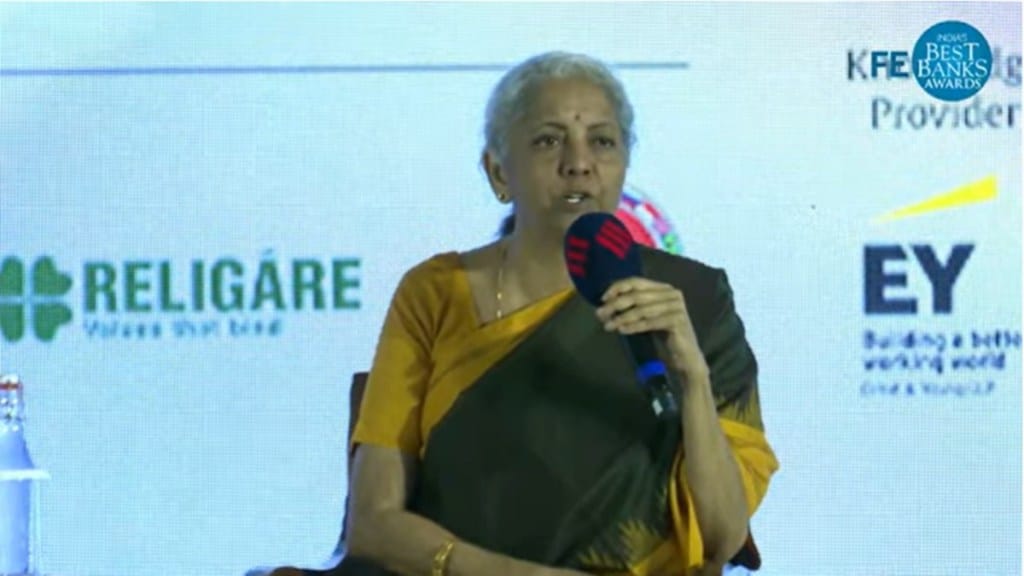At the FE Best Banks Awards function on Friday evening, Union minister for finance and corporate affairs Nirmala Sitharaman answered, with her usual calmness, a whole host of questions ranging from the debate over freebies to the downside risks to growth projections. She also deftly sidestepped a few questions that were in the realm of policy-making such as a possible extension of the free food scheme, the first extension of which is expiring in September, and the reasons for the lack of structural reforms. The overall impression, however, was that of a confident minister willing to share a realistic assessment of the economy with a galaxy of industry leaders in the audience. Pointing out that the International Monetary Fund’s latest projection of a 7.4% economic expansion for India in FY23 and FY24 was broadly in sync with the government’s own assessment, she hastened to add that given the downside risks from external factors, it was not yet time to drop caution on the growth front. Sitharaman was generous towards the private sector and termed the slow growth of private capex a “media perception,” as robust corporate tax collections were a clear sign that private investments were picking up fast.
The most important point she made was an acknowledgement of the risks for India’s exports in the face of a worsening external situation following a slowdown in at least two big economies. The US has slipped into a technical recession with two consecutive quarters of shrinking GDP. Meanwhile, major European economies are battling high inflation and damage to economic growth. The US is the biggest destination for Indian exports, and the EU comes second. It is no surprise therefore that in July, exports growth was the slowest since February 2021, having grown 47% in between.
Also Read| FE Best Banks Awards: Banking stalwarts to be honoured today; Chief Guest Nirmala Sitharaman to preside over the function
In that context, exporters should feel reassured by Sitharaman’s comments that the government is “ready to face the challenges” and will give all the necessary support they need. That support will be required at a time when the global environment is less than hospitable. There is no doubt that Indian exporters achieved a remarkable feat in the last fiscal year by crossing the $400 billion mark for merchandise exports. The pandemic had dented the numbers—in FY21, exports had fallen 7.3% from the previous year. That is a spectacular turnaround, but the fact is that imports have also surged, raising the trade deficit to record levels and placing a significant pressure on the overall balance of payments. Also, the higher export value was largely on account of inflation in the commodities markets, which had pushed the price of raw materials in the international market. That inflation has eased, of late.
Though the external situation is not in India’s control, the government can do a few things to make exports competitive on a sustained basis. For one, the brakes on the rupee should be eased to allow some depreciation of the currency in real effective exchange rate terms to ensure medium-term viability of the external payments situation. Noted economist Shankar Acharya has made some important suggestions, which should be taken note of. For example, the tariff increases that have occurred since 2017 should be phased out as a tax on imports amounts to a tax on exports. Also, India needs a policy shift away from subsidy-based promotions of exports and towards faster adoption of the environmental, social and governance regulations.

